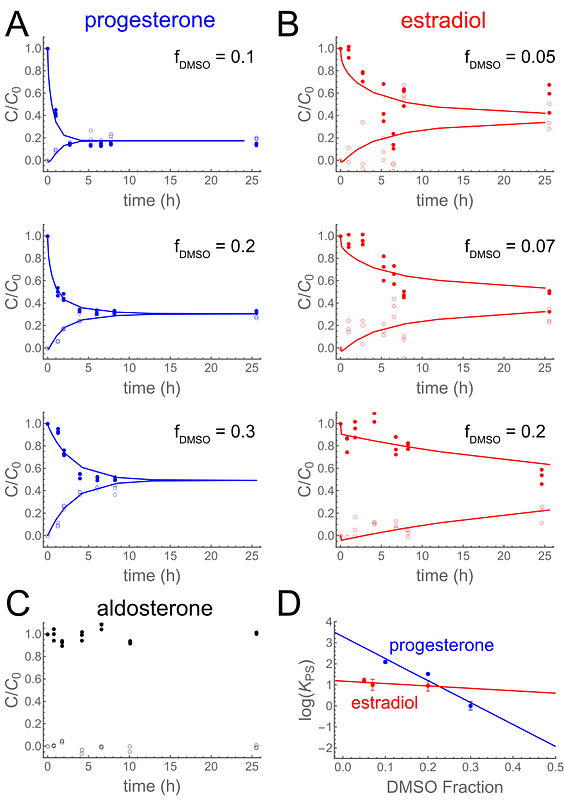Quantifying and modeling loss of steroid hormones in PDMS-based devices

Quantifying and modeling loss of steroid hormones in PDMS-based devices
Hermann, N. G.; Ficek, R. A.; Markov, D. A.; McCawley, L. J.; Hutson, M. S.
AbstractMany polydimethylsiloxane (PDMS)-based devices, e.g. organ-on-chip or microphysiological systems, have been developed to investigate biological processes at a miniaturized scale. These devices typically culture cells under microfluidic perfusion to dynamically dose cells with chemicals of interest; however, PDMS is known to interact with hydrophobic compounds and can strongly limit such compounds\' in-device bioavailability. Here, we quantify chemical-PDMS interactions for three commonly used steroid hormones: aldosterone, estradiol, and progesterone. We find that aldosterone does not detectably interact with PDMS; estradiol interacts modestly; and progesterone interacts strongly. Based on these measured interactions, we computationally model dynamic dosing protocols based on pulsed/bolus delivery and circadian control. We show that interactions with PDMS can strongly disrupt these dynamic dosing protocols in a chemical-specific and flow-rate-dependent manner. These results have critical implications for the use of steroid hormones in PDMS-based devices.